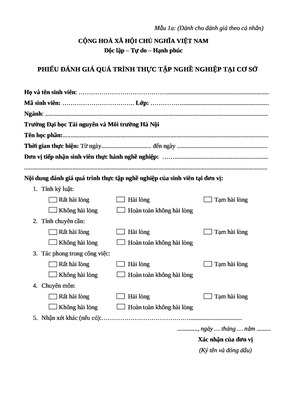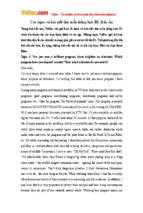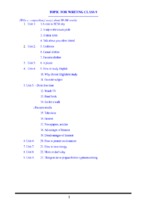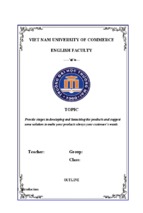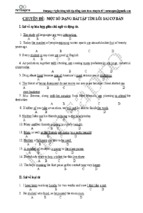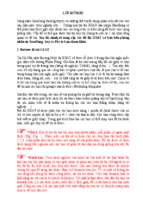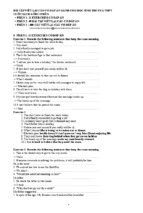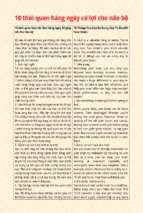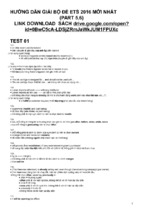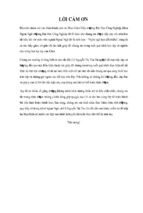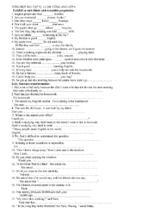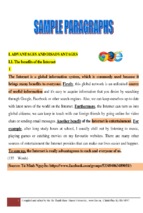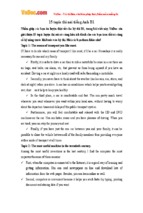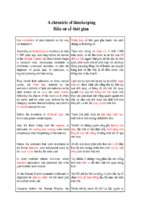PRAISE FOR THE SKETCHNOTE HANDBOOK
“Entertaining and memorable (just like sketchnotes), this fast-reading,
fact-packed book by the godfather of sketchnoting provides everything
you and your team need to know about the creative, mnemonic,
and business benefits of this brilliant new method of note taking.”
—Jeffrey Zeldman, author of Designing with Web Standards
“Mike Rohde has taken his original, fun, and smart approach
to note taking and broken it down into simple, clear steps.
—Chris Guillebeau, author of The $100 Startup
“Sketchnotes are a great way to capture the highlights of an idea
in a way that will naturally work for your brain.
Nobody will teach you how to do it better than Mike.”
—David Heinemeier Hansson, co-author of REWORK
“The Sketchnote Handbook is an informative, hands-on book
designed to quickly share the principles of sketchnoting
so you can get right to creating sketchnotes for yourself. Mike’s fun,
illustrative style energizes you to pick up a pen and sketchnote!”
—Nancy Duarte, CEO Duarte Inc.,
and best-selling author of Resonate and Slide:ology
“Never fear note taking again. Mike Rohde demystifies the practice
and makes it accessible to everyone. Your brain will thank him later.”
—Sunni Brown, co-author of Gamestorming and leader of the Doodle Revolution
“This book is not really a book. It’s a tool kit for learning a new and better
way of capturing and understanding information, and it’s perfectly aligned
with the way our brains actually work. If you’re a student, teacher, or businessperson,
this book has the potential to change the way you learn, and the way you think.”
—Daniel Coyle, The New York Times best-selling author of
The Talent Code and The Little Book of Talent
“The perfect introduction to visual note taking
and the most useful how-to guide I’ve ever read, no contest.”
—Josh Kaufman, author of The Personal MBA: Master the Art of Business
This page intentionally left blank
THE SKETCHNOTE HANDBOOK:
The illustrated guide to visual note taking
Mike Rohde
Peachpit Press
Peachpit Press is a division of Pearson Education.
Copyright © 2013 by Michael D. Rohde
Acquisitions Editor: Nikki Echler McDonald
Development Editor: Anne Marie Walker
Proofreader: Liz Welch
Production Editor: Katerina Malone
Indexer: James Minkin
Cover Design and Illustrations: Mike Rohde
Interior Design and Illustrations: Mike Rohde
NOTICE OF RIGHTS
All rights reserved. No part of this book may be reproduced or transmitted in any form
by any means, electronic, mechanical, photocopying, recording, or otherwise, without
the prior written permission of the publisher. For information on getting permission for
reprints and excerpts, contact
[email protected].
NOTICE OF LIABILITY
The information in this book is distributed on an “As Is” basis without warranty. While
every precaution has been taken in the preparation of the book, neither the author
nor Peachpit shall have any liability to any person or entity with respect to any loss or
damage caused or alleged to be caused directly or indirectly by the instructions contained
in this book or by the computer software and hardware products described in it.
TRADEMARKS
Many of the designations used by manufacturers and sellers to distinguish their
products are claimed as trademarks. Where those designations appear in this book, and
Peachpit was aware of a trademark claim, the designations appear as requested by the
owner of the trademark. All other product names and services identified throughout
this book are used in editorial fashion only and for the benefit of such companies with no
intention of infringement of the trademark. No such use, or the use of any trade name, is
intended to convey endorsement or other affiliation with this book.
ISBN 13: 978-0-321-85789-7
ISBN 10: 0-321-85789-5
987654321
Printed and bound in the United States of America
To Gail, Nathan, Linnea, and Landon,
thank you for your support on this
long and challenging journey.
You are the reason I work so hard
to create things and share my ideas.
I love you.
ACKNOWLEDGMENTS
TAKING ON A PROJECT OF THIS MAGNITUDE is a great reminder of just how
valuable my family, friends, colleagues, and community are. Without them, I’m
certain The Sketchnote Handbook would not have happened.
GAIL, you are the first and most important person on the list. Even though you
were expecting a baby, you encouraged and supported me on many late nights
and weekends. Thanks for sharing the vision with me. I love you!
NATHAN, LINNEA AND, LANDON, thanks for supporting me during the creation
of the book. As your dad, I hope my work makes you proud.
VON GLITSCHKA, you get credit for sparking this book over Thai food in Portland.
Thanks for believing in me and pitching my book idea just minutes after dinner.
NIKKI MCDONALD, you’ve been behind me on this book from the beginning to the
end. Thanks for considering my book idea, selling it to your team, and keeping
me on track and encouraged through the long, hard creation process. Most
important, thanks for helping me create something truly unique and different.
ANNE MARIE WALKER, you’ve been a fabulous editor, challenging me to make the
book better. Thanks for keeping me on my toes and making my prose look so good.
PEACHPIT, your team has been a joy to work with. Everyone was professional and
so easy to work with. Thank you Nancy, Glenn, Katerina, Mimi, Lupe, Charlene,
Amy, Eric, Liz, and James for making my first book experience a great one.
DAVID FUGATE, thanks for your expert guidance through the book contract
process. I couldn’t have asked for a better agent.
vi
DELVE WITHRINGTON, thanks for creating fonts of my hand lettering.
Your typefaces have saved me many long hours of drawing every letter by hand.
FEATURED SKETCHNOTERS: Binaebi Akah, Craighton Berman, Boon Chew,
Veronica Erb, Jessica Esch, Alexis Finch, Michelle George, Eva-Lotta Lamm,
Gerren Lamson, Matthew Magain, Timothy Reynolds, Francis Rowland,
Chris Shipton, Paul Soupiset, and Kyle Steed, thanks for your contributions.
BRIAN ARTKA, GABE WOLLENBURG, STEPHEN MORK, MARK FAIRBANKS, AND
CYNTHIA THOMAS, thanks for your encouragement throughout the project.
JON MUELLER, thanks for allowing my sketchnotes of your talk to become such
a key part of the book. I’ve been honored to call you a friend and appreciate your
guidance in the creation of my first book.
FRIENDS AND COLLEAGUES , thanks for your reviews and feedback about the
book in production. This is a better book because of your help.
TO THE SKETCHNOTING COMMUNITY, thanks for your support through the years.
I’m excited to see where our community will go and how it will grow once this book
reaches new readers and viewers.
vii
This page intentionally left blank
ABOUT THE AUTHOR
MIKE ROHDE has a passion for simple and usable
design solutions. That passion, along with his lifelong
habit of recording concepts and observations
through sketching and doodling, inspired him to
develop sketchnotes—a practical art that translates
simple and complex ideas into easily recalled bits
of information.
Professionally, Mike focuses on user interface,
user experience, visual design, and icon design for mobile and web applications
at Gomoll Research + Design in Milwaukee, Wisconsin.
As a sketchnoter, Mike provides live, real-time sketchnotes of events,
meetings, and experiences in venues across the United States.
In his illustration practice, Mike uses his unique drawing style to amplify and
clarify ideas. His work has been featured in REWORK, the best-selling book by
Jason Fried and David Heinemeier Hansson; The $100 Startup, a best-selling
book by Chris Guillebeau; and The Little Book of Talent by Daniel Coyle.
Community and sharing are important cornerstones of Mike’s philosophy, as
evidenced by the creation of The Sketchnote Army, a website dedicated to
finding and showcasing sketchnotes and sketchnoters from around the world.
Mike has also shared his thinking, design process, and samples of his design and
illustration work at his personal website, rohdesign.com, since 2003.
Mike lives with his wife, Gail, and children, Nathan, Linnea, and Landon, just
outside of Milwaukee. He’s an avid Green Bay Packers fan.
Learn more about Mike at rohdesign.com.
ix
1
2
3
x
4
6
5
7
xi
INTRODUCTION
IT WAS THE WINTER OF 2006 AND I COULDN’T TAKE IT ANYMORE.
I was done. Fed up. I vowed not to take another note with a mechanical pencil or
with a giant notebook until I’d found a better way to take notes.
Thinking back, I’m not sure how note taking had become such a burden. In high
school and college, I enjoyed expressing ideas visually—easily blending words
with drawings, diagrams, and typography in my notebooks.
Somewhere in the process of growing up and getting a job, I lost my way. The
relaxed, visual note-taking approach from my college days had morphed into
a fanatically detailed, text-only death march. Ironically, I became a great note
taker who couldn’t stand taking notes.
The solution to my note-taking problem was a blank pocket Moleskine, stacked
neatly on my bookshelf. I’d bought it on a whim a few months before and I realized
that its small size, paired with an unerasable pen, could be a perfect way to
challenge my overly detailed, note-taking mind-set.
In January 2007, I brought my Moleskine and a gel pen to Chicago for a
conference to try sketchnoting. Could I take fewer but better notes? If I focused
on quality, could I live with seeing my mistakes in pen? Would adding drawings to
my notes bring back my joy of note taking? Could taking notes become fun again?
The answer to these questions was a resounding yes! As I captured my first
sketchnotes, I was able to slow down and listen for big ideas. I loved the
no-turning-back attitude of using a pen. Best of all, I had a great time taking
notes again.
Ever since that mind-altering experience, I’ve been working hard through my
blog, The Sketchnote Army, and at live presentations and workshops to share my
passion for sketchnoting. I take great pleasure in talking about why sketchnoting
enables you to take better notes, explaining how to create sketchnotes, and
persuading people to give sketchnoting a try. This passion for sketchnoting is
xii
what drove me to spend hundreds of hours writing, illustrating, and designing this
book. I want you to enjoy taking notes as much as I do, and I hope that by the end
of this book you will.
WHO IS THIS BOOK FOR?
Whether you believe you can or can’t draw, I’m here to tell you that anyone who
can make marks on paper can benefit from this book. Sketchnotes are about
hearing and capturing meaningful ideas, not how well you draw.
Take it from me, you can create sketchnotes. In this book, I will show you how to
draw simple objects, create custom lettering, and use other hand-drawn elements
to help you express your thoughts visually. Even if you can’t draw a straight line,
you can learn to sketchnote with a little practice.
My first sketchnotes • UX
Intensive 2007
xiii
WHAT IS THE SKETCHNOTE HANDBOOK?
The Sketchnote Handbook is a simple, visual manual designed to teach you basic
sketchnoting concepts, approaches, and techniques quickly, so you can start
creating sketchnotes immediately.
Each page of this book has been lovingly hand-sketched to show you how much
fun it is to learn from notes that incorporate pictures and words equally. Rather
than write a lot of words about sketchnoting, I decided that if I was going to talk
the talk, I’d better walk the walk (or, maybe, sketch the sketch?). So, I created the
entire book as one, long, fun—hopefully inspiring—illustration.
pter 4
book • Cha
note Hand
The Sketch
xiv
THE SKETCHNOTE COMMUNITY
Of course, I’m not the only person in the world who sketchnotes. I’m amazed and
energized by the wide variety of people all over the world who create and actively
share their sketchnotes. I love the sense of community that has sprung up around
this process, and I’ve made a great many friends through sharing and discussing
sketchnotes online and at conferences.
I invited 15 of these friends—leading sketchnoters from around the world—to
each create a two-page spread for this book that shares a bit about who they are,
how they came to sketchnoting, and a tip or two to help you take better notes.
What I hope you’ll notice from looking at their work at the end of each chapter
is that everyone sees the world differently; everyone processes information
differently; everyone has their own, unique style, and that’s part of what makes
sketchnoting so much fun! There’s no right way or wrong way to do it.
I will teach you the basic principles of sketchnoting, but the real joy will come
when you start creating sketchnotes and discover how taking notes can unleash
your creativity and make paying attention, even at the most boring meetings,
something you look forward to doing.
REACH OUT
As you learn from this book, I encourage you to share your own sketchnotes
at The Sketchnote Handbook Flickr group (www.flickr.com/groups/
thesketchnotehandbook). I plan on hanging out there a lot, and I’d love to see
how you’ve taken this process and made it your own.
You can view more of my work and contact me through my personal website at
rohdesign.com or on Twitter at twitter.com/rohdesign. I look forward to hearing
what you think of the book and learning about your sketchnoting experiences.
IT’S TIME TO GET STARTED. GRAB A NOTEBOOK AND A PEN.
LET’S GO TAKE SOME NOTES!
xv
56
57


